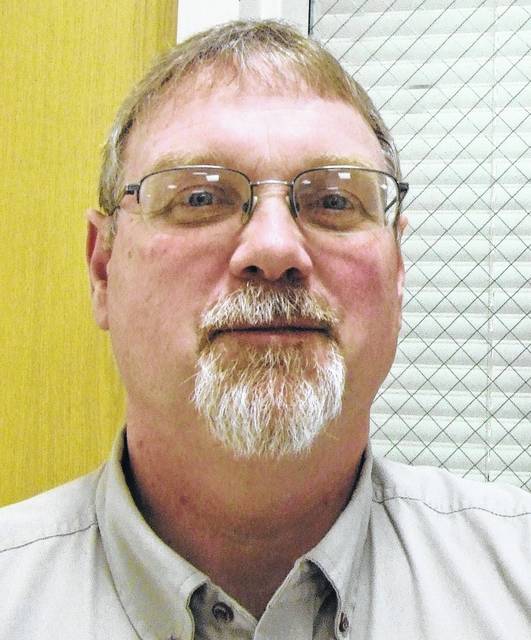
I thought about starting this week’s column with an “April Fools” but decided I might make someone mad, offend someone or just confuse folks about whatever I was going to “April Fool” everyone about.
Besides, I think there are plenty of fools out there without adding to it.
As we know, the 2018 Farm Bill, passed by Congress and signed by President Trump, now awaits implementation by United States Department of Agriculture (USDA) agencies like the Farm Service Agency, Natural Resources Conservation Services, Risk Management Agency and many others.
The passage of the Farm Bill authorizes funding for many of the federal programs producers utilize throughout the growing season. This bill is considered to be mostly evolutionary, not revolutionary, but there are still changes that will be important to producers and agribusinesses.
In the near future I am scheduled to be trained on the farm bill components, the decision tool(s) available, and then bring this information back to you through some specific Farm Bill information meetings to help you make the correct decisions for your operation.
In the meantime, The Ohio State University, the Purdue Center for Commercial Agriculture, the University of Kentucky and Farm Credit Mid-America are jointly sponsoring a Farm Bill Summit on Thursday, April 11 at the Versailles High School in Versailles, Ohio. The program will feature presentations by three of the nation’s top ag policy professionals: Keith Coble from Mississippi State; Jonathan Coppess from the University of Illinois; and Patrick Westhoff from the University of Missouri’s Food and Agricultural Policy Research Institute.
The three keynote speakers will speak on their areas of expertise and cover the three largest agricultural titles in terms of spending within the farm bill: commodities (Patrick Westhoff), conservation (Jonathan Coppess) and crop insurance (Keith Coble).
Free registration is available and you can register by calling Sam Custer, Darke County Extension Educator, at 937-548-5215, or Dudley Lipps with Farm Credit at 937-231-7207. Refreshments will be served at 6 p.m. with the program starting at 6:30 p.m.
Besides the Farm Bill, we will all need to be aware of ongoing water quality issues in Ohio and what that means to farms and producers in Southwest Ohio.
Currently, eyes are on the Northwestern area of Ohio and the influence it has on the western basin of Lake Erie. All of Ohio is being watched and evaluated to its effect on water quality throughout the state and beyond the borders of Ohio and we need to the same on our farms.
According to Greg LaBarge, Extension specialist, research measuring nutrient losses from surface and subsurface drainage in Ohio indicates that not all fields contribute equally to various water quality issues.
Fields with higher than average potential losses have some characteristics observed during everyday field activities or when working with agronomic records.
For example, a stream bank collapsing and sloughing off is adding to downstream sedimentation issues, or a field with a soil test report showing phosphorus levels above agronomic need can result in higher soluble phosphorous losses.
Having landowners and operators recognize these higher risk scenarios and react to them by contacting conservation professionals can help speed water quality improvements.
A new helpful publication has been developed, Bulletin 969- A Field Guide to Identifying Critical Resource Concerns and Best Management Practices for Implementation along with an accompanying website https://agbmps.osu.edu/. The guide was prepared with cooperating agencies and organization through a grant from the Ohio Soybean Council.
The bulletin focuses on erosion, phosphorus and nitrogen. It describes scenarios and provides pictures in which losses of soil, nitrogen and phosphorus resulted in higher quantities or concentrations in studies measuring water leaving at the field edge conducted in Ohio.
The bulletin then provides a list of common Best Management Practices (BMP’s) for the different critical concerns. Along with listing best management practices, the bulletin provides the cost, advantages and precautions to consider helping narrow down the best practice to use.
The guide includes practices used on a field, at the edge of a field and within a stream.
In-field practices occur in the boundaries of the field such as tillage, cover crops and nutrient applications. Edge of field practices modify water leaving the field with practices such as drainage water management, or filters. In-stream practices modify the stream or filter water moving down the ditch or stream.
Practices addressed include erosion control, water control, filters and 4-R nutrient stewardship – proper place, time, rate and source.
The upcoming spring season provides a new opportunity to inventory potential high-risk concerns. Some of those concerns will involve soil erosion, loss of nutrients, and many other factors.
The new bulletin is available statewide for $10 or as a downloadable and can be purchased pdf file for $8.50 from https://extensionpubs.osu.edu/.
Tony Nye is the state coordinator for the Ohio State University Extension Small Farm Program and has been an OSU Extension Educator for agriculture and natural resources for over 30 years, currently serving Clinton County and the Miami Valley EERA.


